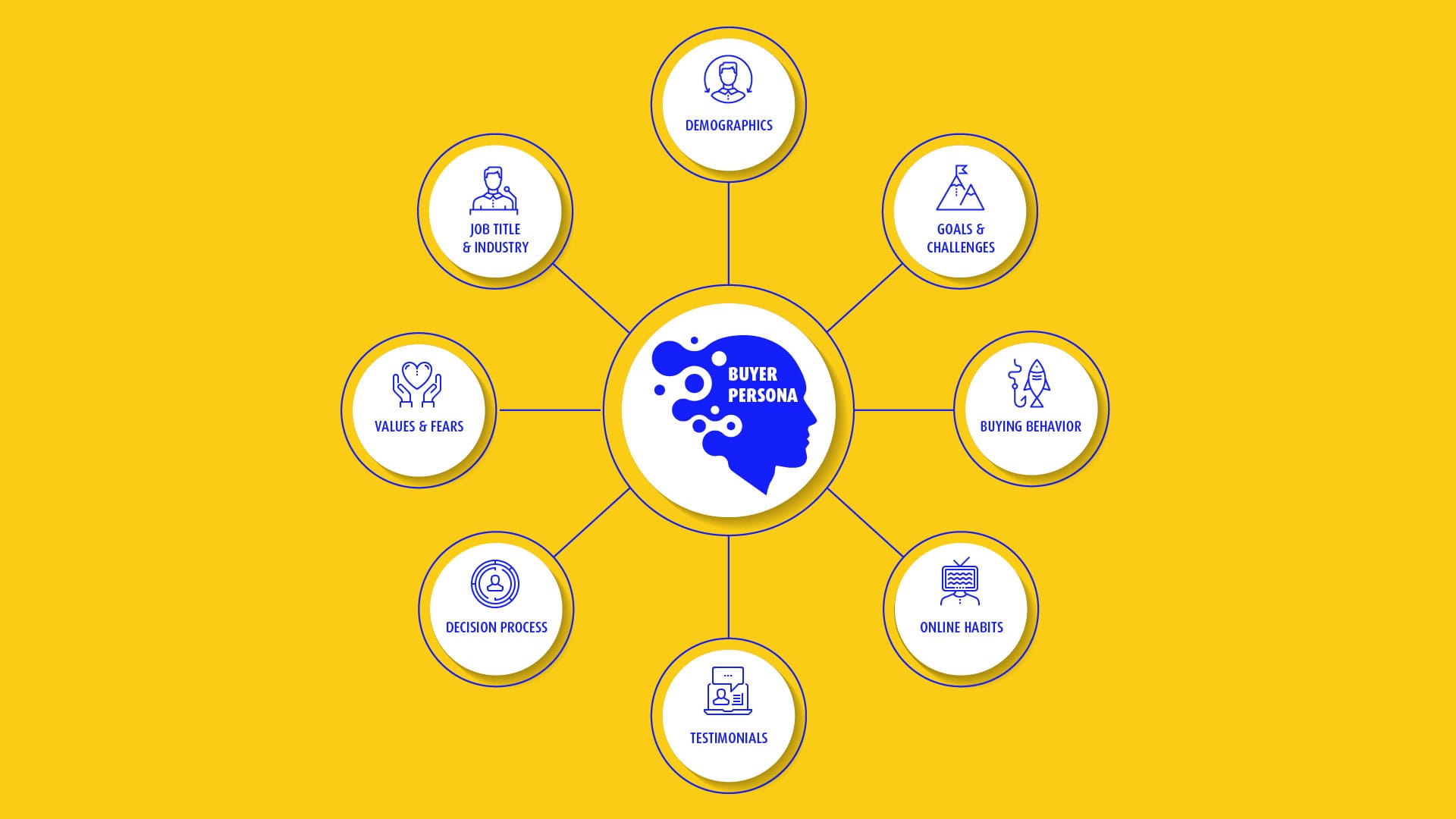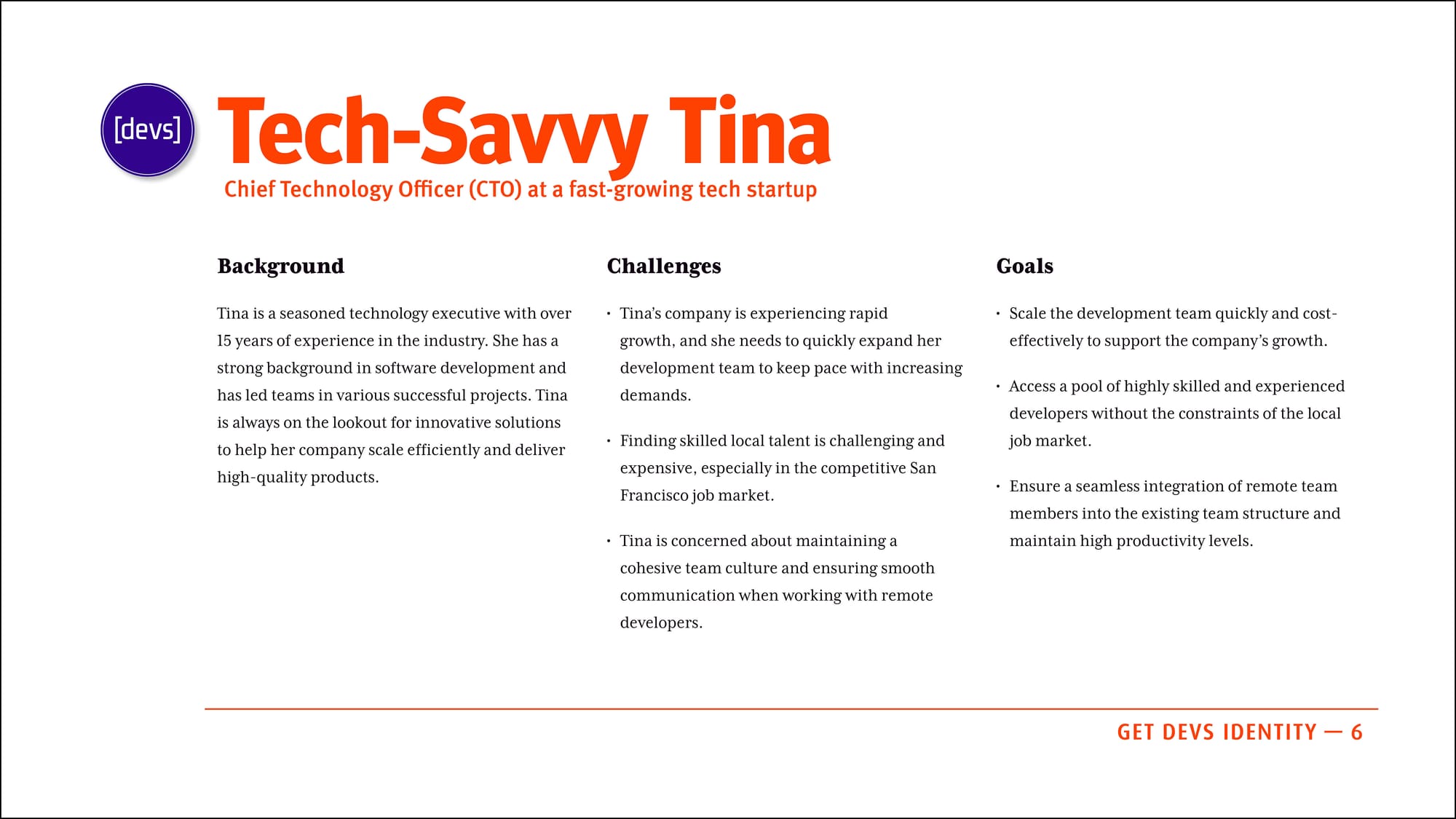Introduction: Buyer Personas The Jake Peralta Way
In the TV show Brooklyn Nine-Nine, Andy Samberg plays Detective Jake Peralta, known for his irreverent wit and exaggerated delight in creating absurd undercover personas.
Whenever he needs to infiltrate a suspect's world or gather intelligence for a case, Jake develops backstories for his character drawn from a puree of cops shows. He imagines his persona's age, occupation, and personal style. Then, diving deeper, he crafts a detailed narrative about their motivations.

Creating brand personas requires a similar level of imagination, empathy, and attention to detail. Marketers can create campaigns that give immediacy and depth to their target audience by following Jake Peralta's example and investing time and effort into developing rich, authentic personas.
Creating brand personas is a lot like going undercover. Like Jake Peralta, you need to develop detailed, authentic characters that capture the essence of your target audience. Understanding their needs, preferences, and behaviors allows you to create marketing campaigns that resonate deeply and drive real results.
In this blog post, we'll explore the art and science of crafting effective brand personas, from research and development to application and optimization.
What are Brand Personas, and Why Do They Matter?
Brand Personas Explained
Brand personas are fictional yet realistic representations of your ideal customers. They are created based on thorough market research, data analysis, and insights from your existing customer base. These personas go beyond simple demographics and delve into your target audience's psychographics, behaviors, motivations, and goals.
Think of brand personas as detailed character profiles that bring your ideal customers to life. They include age, gender, location, income, education, job title, family status, and more personal details like hobbies, interests, values, challenges, and aspirations.
We like to develop personas early in our engagements to help us develop everything from brand identities to keyword research to content plans.
By creating these comprehensive profiles, you can better understand your target audience's unique needs, preferences, and expectations.

So, why do brand personas matter?
Consumers expect personalized, relevant content and experiences catering to their needs and interests. This is where brand personas come into play.
By developing well-crafted brand personas, you can tailor your marketing strategies, messaging, and content to resonate with your ideal customers on a deeper level.
When you understand their pain points, goals, and preferred communication channels, you can create targeted campaigns that address their specific challenges and offer valuable solutions.
Brand Consistency and More Through Personas
Brand personas also help you create consistency across all your marketing efforts. When your entire team clearly understands your target audience, they can ensure that every touchpoint - from your website copy to your social media posts - speaks directly to your ideal customers in a way that builds trust and loyalty.
Moreover, brand personas can inform your product development, customer service, and overall business strategy.
By keeping your ideal customers at the forefront of all your decisions, you can create products, services, and experiences that meet their needs and exceed their expectations.
In short, brand personas are essential tools for any business that wants to create authentic, meaningful connections with their target audience.
The Key Elements of a Comprehensive Brand Persona
Creating a comprehensive brand persona involves gathering and analyzing your ideal customer's life and decision-making process. A well-rounded persona should include a mix of demographic and psychographic information, as well as insights into their pain points, goals, and preferred communication channels.
Audience Demographics
Demographics are the foundation of your brand persona, providing essential information about your target audience's age, gender, location, income level, and education. These data points help you understand the basic characteristics of your ideal customer and tailor your messaging and offerings accordingly.
Pain Points and Challenges
Another critical element of a comprehensive brand persona is identifying your ideal customer's pain points and challenges.
What obstacles do they face in their personal or professional life? What keeps them up at night? By understanding their struggles, you can position your brand as a solution provider and offer targeted products, services, or content that addresses their specific needs.
Goals and Aspirations
In addition to pain points, your brand persona should consider your ideal customer's goals and aspirations. What do they hope to achieve in the short and long term? How can your brand help them reach their objectives and live their best life?
Aligning your messaging and offerings with your audience's aspirations can create camaraderie and loyalty beyond transactional interactions.
Preferred Communication Channels and Content Formats
Finally, a comprehensive brand persona should include insights into your ideal customer's preferred communication channels and content formats. Do they spend hours scrolling through Instagram or prefer in-depth blog posts and email newsletters?
Understanding where and how your audience consumes information can optimize your content strategy and ensure your brand is visible and engaging across the right platforms.


Conducting Research to Develop Accurate Brand Personas
Analyze Your Existing Customer Data and Insights
To create authentic and effective brand personas, you need to base them on real data and insights from your target audience. This requires a comprehensive research process that involves analyzing various sources of information to paint a detailed picture of your ideal customer.
Diving into your existing customer data is one of the best places to start. Look at your CRM, email lists, and purchase history to identify common characteristics and behaviors among your current customers.
- What demographics do they share?
- What products or services do they tend to gravitate towards?
This information can provide valuable clues about what motivates and appeals to your target audience.
Surveys and Interviews
Other powerful research tools are surveys and interviews. Contact your current customers or leads and ask them about their needs, challenges, and preferences.
You can use online survey tools like SurveyMonkey or Google Forms to gather responses at scale or conduct more in-depth interviews with a smaller group of customers to gain deeper insights.
For example, if you're developing personas for an AI Dream Interpretation app, you might explore subreddits like r/Dreams, r/DreamInterpretation, or r/LucidDreaming to see what motivates users to understand their dreams, what challenges they face in remembering or interpreting dreams, and what features they value most in dream interpretation tools.
You can also engage directly with users by posting questions or surveys in relevant subreddits (following each community's rules and guidelines) to gather more targeted insights.
As you research these channels, look for common patterns and emerging themes.
- What pain points or goals do users mention most frequently regarding dream interpretation?
- What language and tone do they use to describe their dream experiences and interpretations?
By identifying these recurring elements, you can start to build out the core characteristics and attributes of your brand personas.
Remember, the key to accurate brand personas is basing them on real, diverse data from your target audience. By leveraging customer data, surveys, social media insights, and platforms like Reddit, you can gather the rich, authentic insights needed to create personas that truly resonate with your ideal customers.
Synthesize Your Research Findings
Create Customer Segments Based on Shared Attributes
Once you've conducted thorough research across various channels, it's time to organize and synthesize your findings to create cohesive brand personas. Identify common patterns and characteristics among your target audience and group them into distinct customer segments.
Start by reviewing all the data you've collected from your customer database, surveys, interviews, social media analytics, and online behavior tracking.
Look for recurring themes, pain points, goals, and preferences that emerge across different sources. Note any demographic or psychographic characteristics that seem to cluster together.
Prioritize the Most Relevant and Valuable Segments
As you create these segments, consider which ones represent your most valuable and engaged customers. You'll want to prioritize these segments when developing your brand personas, as they have the greatest potential to drive business growth and long-term loyalty.
Create Detailed Profiles for each Brand Persona
Use your insights to create compelling narratives and backstories for each persona.
- What motivates them?
- What challenges do they face?
- How do they make purchasing decisions?
The more detailed and specific you can be, your personas will become more actionable and relatable.
Add visual elements to your persona profiles, such as stock photos or illustrations representing each persona's appearance and style. This can help bring your personas to life and make them feel more tangible and memorable for your team.
Bring Your Brand Personas to Life
Bringing your brand personas to life through vivid names, visuals, narratives, and team-wide adoption creates a powerful framework for building authentic connections with your target audience.
When every aspect of your brand experience is tailored to your personas' specific needs and preferences, you'll be well on your way to driving engagement, loyalty, and long-term business growth.
Assign Names and Visual Representations
Assign memorable names and visual representations to each persona. Instead of referring to them as "Persona A" or "Segment 1," give them real names that reflect their personalities and attributes.
For example, you might have "Dreamy David" for your spiritually-inclined millennial persona or "Curious Carol" for your self-discovery-focused mom persona.
In addition to names, consider creating visual avatars or illustrations for each persona. These images can be used across your marketing materials, from your website and social media profiles to your email campaigns and advertising creatives.
Seeing a familiar face attached to each persona can help your team internalize and connect with them more personally.
For example, you might describe how Dreamy David first discovers your AI Dream Interpretation app through a targeted Facebook ad, then explores your website to learn more about your personalized dream analysis and interpretation guides. As he delves deeper into understanding his dreams, he engages with your email content and joins your online community for insights and shared experiences.
Incorporate Real Quotes and Testimonials
Consider incorporating real customer quotes and testimonials that align with each persona's experiences to make these narratives more authentic and relatable. These firsthand accounts can help validate your personas and make them feel more credible and grounded in reality.
Share Your Brand Personas with Your Team
Share your brand personas with your entire team and key stakeholders. Conduct persona workshops or training sessions to ensure everyone understands each persona's unique characteristics, needs, and preferences.
Encourage your team to refer to the personas regularly when making decisions about product development, content creation, customer service, and other areas.
Apply Brand Personas to Your Marketing Strategies
Tailor Your Message to each Persona's Preferences
Once you've developed detailed, authentic brand personas, use them in your marketing efforts.
By tailoring your messaging, content, and tactics to each persona's unique needs and preferences, you can create more relevant, personalized experiences that drive engagement and conversions.
Selecting the Right Channels for Each Persona
One of the most effective ways to apply brand personas to marketing is to create targeted content that speaks directly to each persona's pain points, goals, and interests.
For example, if one of your personas is a curious, spiritually-inclined professional, you might create a series of quick, insightful dream interpretation tips or mini-guides to common dream symbols that fit seamlessly into their busy lifestyle. When crafting your content, pay close attention to the language and tone that resonates with each persona.
Use your insights about their communication preferences to ensure your messaging feels authentic and relatable. Whether you use dream-specific terminology for your expert personas or adopt a more casual, conversational tone for your millennial audience, tailoring your language can help build trust and rapport with each segment.
If your personas are avid TikTok users, you might prioritize engaging, short-form videos that showcase your app's unique features and user experiences.
Email marketing is another area where brand personas can make a big impact. Segment your email lists based on persona characteristics and create targeted nurture campaigns that deliver personalized content and offers to each group.
Speaking directly to each persona's needs and interests can boost your email engagement rates and increase conversions.
Create Targeted Campaigns to Address Specific Pain Points and Goals
Employ your brand personas to inform your overarching brand strategy and customer experience. Every touchpoint should be crafted with your target personas, from your website design and product offerings to your customer service approach and loyalty programs.
You can foster long-term brand affinity and advocacy by consistently delivering on each persona's unique needs and expectations.
Refine Your Personas with New Data
Remember, applying brand personas to your marketing strategies is an ongoing process.
As you gather new data and insights about your audience, refine and update your personas accordingly. By staying attuned to your ideal customers' evolving needs and preferences, you can continuously optimize your marketing efforts for maximum impact and ROI.
Conclusion
Investing time and effort into researching, developing, and bringing your personas to life can unlock insights and opportunities to create more relevant, personalized marketing experiences.
We've explored the key elements of effective brand personas, from demographics and psychographics to pain points, goals, and communication preferences. This post outlines a step-by-step process for conducting persona research, organizing your findings, and applying your personas to your marketing strategies.
By implementing these insights and continuously refining your personas over time, you can create a powerful framework for understanding and engaging your ideal customers on a deeper level.



